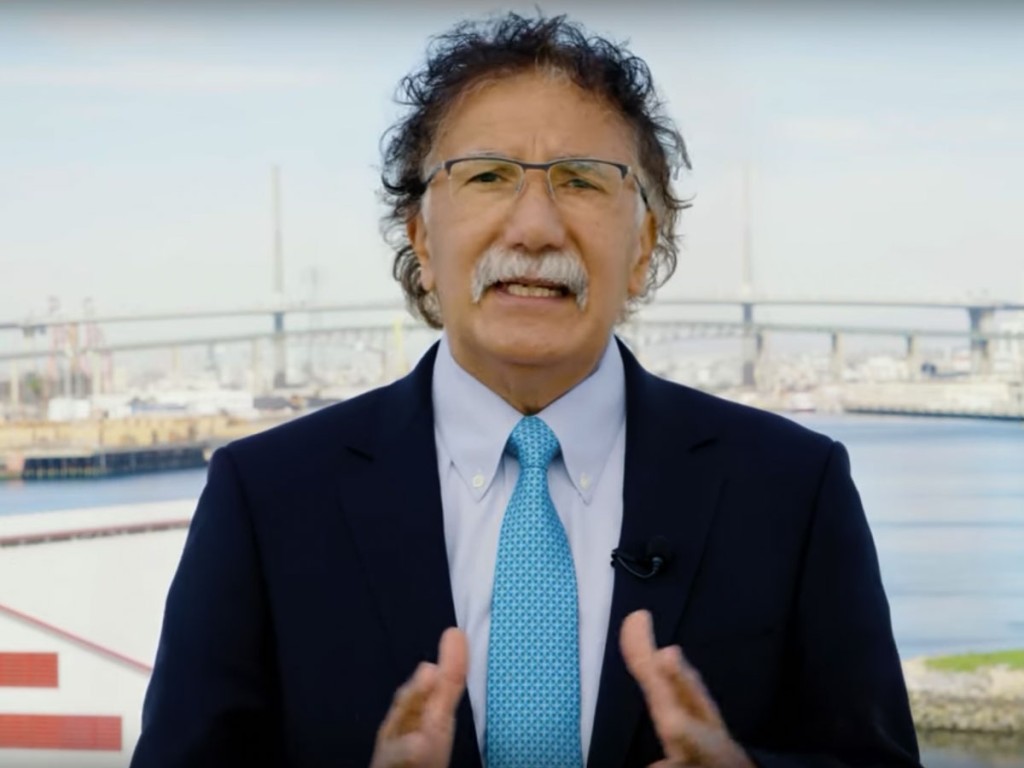Mario Cordero, executive director Port of Long Beach, said the Port has prioritized rail improvements as part of its 10-year/$2.278 billion Capital Program designed to “… improve velocity in the Port and reduce emissions.”
The need for rail improvements has taken on a new urgency after intermodal rail service between the Ports of Long Beach and Los Angeles to Midwest +destinations were delayed and interrupted due to congestion problems on the Union Pacific and Burlington Northern rail lines in 2021.

Cordero said that the upgrades are need based on projections that were made 10 years ago that the Port would process 9 million TEUs. In 2021, the Port achieved that goal when it processed 9.4 million TEUs.
Cordero also emphasized the need for port operations to move to a 24/7 regime.
The Port’s $2.278 billion Capital Program includes $1.457 billion in rail upgrades. They are designed with the following objectives: Increase Terminal Capacity, Increase Rail Capacity, Improve Operational Efficiency, and Implement Zero-Emissions Infrastructure.
The rail upgrades include:
- A fourth track at Ocean Boulevard to reduce bottlenecks
- Double-tracking from Piers G to J
- he Pier B rail improvement project
The Pier B project will provide the following benefits: new arrival and departure tracks, a 93,000 ft support yard, resupply station for up to 30 locomotives, realignment between Pier B and Pico Avenue, and support for 17 trains per day totaling 4.7 million TEUs per year.
According to the Port’s website, “… by allowing longer trains to be assembled with greater frequency, the new facility will dramatically streamline rail operations and minimize the increase in truck trips as cargo volume grows … The first arrival, departure and storage tracks are expected to be completed in 2024, with additional tracks coming online in 2030, followed by project completion in 2032.”
By adding on-dock rail capacity, the project greatly improves rail operations throughout the San Pedro Bay ports complex. More cargo will move with less environmental impact, easing roadway traffic congestion and improving air quality. In fact, the project is needed to help the Port meet on-dock rail goals set in the San Pedro Bay Ports 2017 Clean Air Action Plan Update.
In other news Cordero said:
Cordero expressed confidence that terminals at Los Angeles and Long Beach will meet Clean Air Action Plan (CAAP) goals for zero emission cargo-handling equipment by 2030 and zero emission harbor truck mandates by 2035. Cordero said projected costs are $12 billion to $14 billion. He said the bulk of the funding will need to come from public sources. Some funding has already been forthcoming from the State of California and the federal government. Funding for the Pier B upgrades has helped meet CAAP goals. This included a $52.3 million grant from the U.S. Department of Transportation’s Maritime Administration (MARAD) to move ahead with the Pier B On-Dock Rail Support Facility.
The Port of Oakland and the Northwest Seaport Alliance are supporting the Port of Long Beach’s “Supply Chain Information Highway” digital initiative. The Port described this as a “… free-to-all service that delivers data for shippers and other stakeholders to integrate into their own systems to track cargo and allot resources.” A March 3rd press release quoted Port of Oakland maritime director Bryan Brandes as saying: “Creating a shared digital platform will provide decision makers timely, comprehensive and quality data … for improving goods movement” and John Wolfe, CEO of The Northwest Seaport Alliance who said: “The Northwest Seaport Alliance is glad to work alongside the Port of Long Beach and Port of Oakland to address supply chain challenges. We look forward to this project increasing visibility in cargo delivery and trade opportunities along the West Coast.”
Cordero admitted that more needs to be done to educate the public about the importance of the Port and provide educational opportunities for young people to apply for jobs in the maritime and supply industries. He cited the work of the Port of Long Beach Academy of Global Logistics at Cabrillo High School (AGL), a partnership with the Long Beach Unified School District, which combines academic curriculum with industry-relevant training. The programs support academic and career development including certificates, certifications, and degrees offered by Long Beach City College and California State University, Long Beach.

